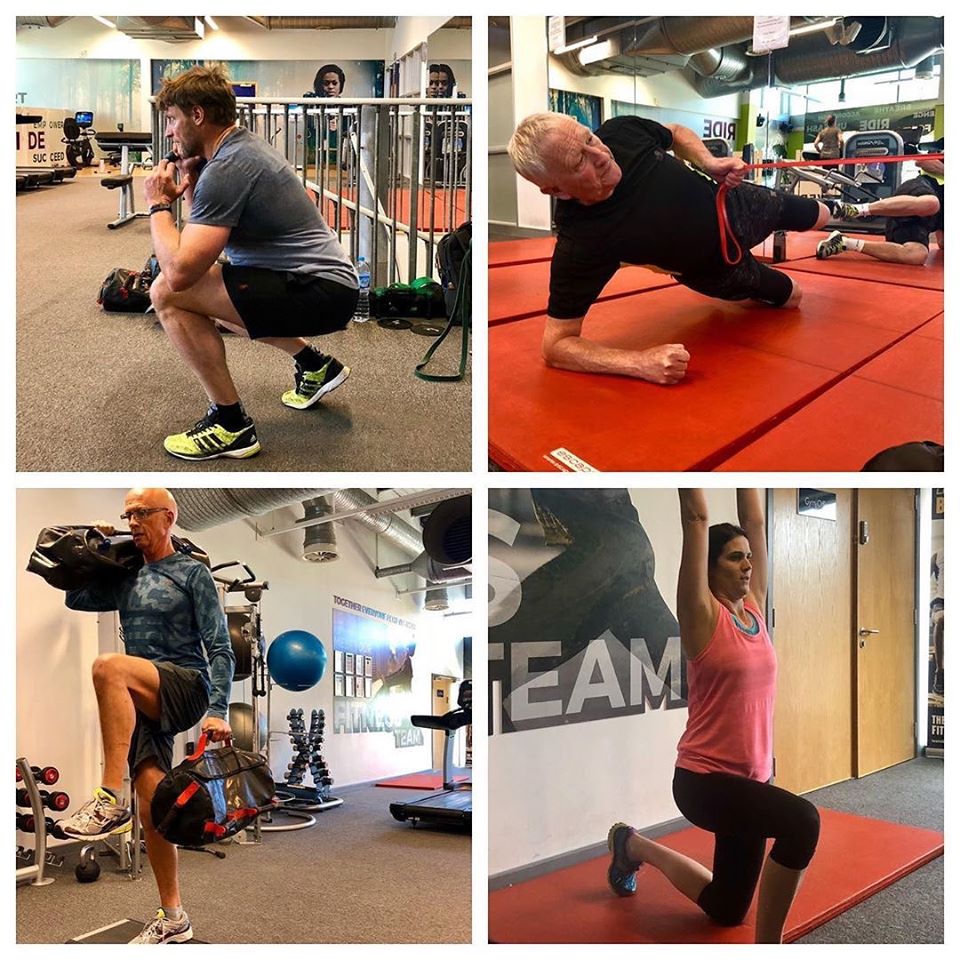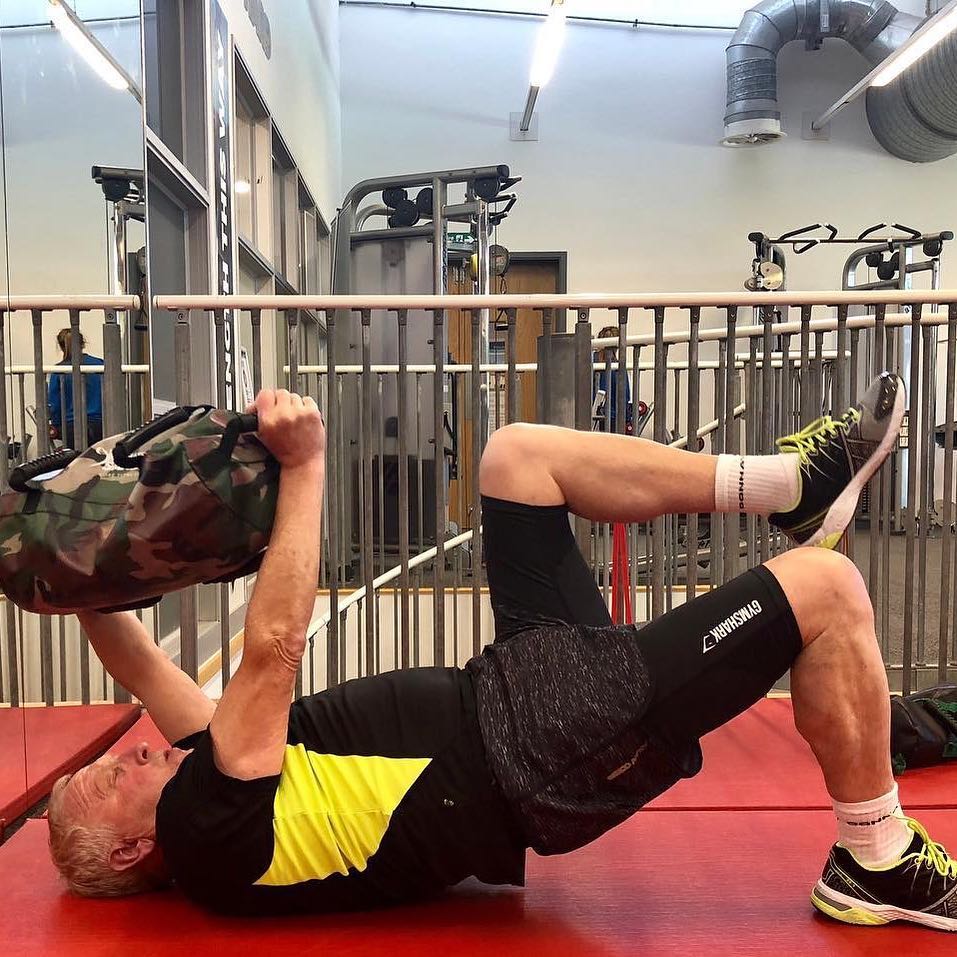Dynamic Mobility Training
2020-04-16

Greg Perlaki, DVRT UK Master (Creator of DVRT Dynamic Mobility & Dynamic Core Workouts)
Since most of us have been at home for a couple of weeks now, mobility and movement is getting even more important as we’re limited with daily activities. If you’re anything like me, you don’t want to spend hours of stretching to move, feel and perform better.

Being home means I have my hands full with other responsibilities besides just working on my mobility training!
Back in the day, I used to do a good 30-40 minutes preparation to get my strength training started. It mostly included foam rolling, some dynamic stretches and maybe some cardio exercise and then off I went to hit some barbell back squats, bench presses and leg press. No wonder I needed that much time to get everything moving, my training was making my body feel worse, not better! Knowing how to create a balanced program is absolutely key as our mobility training and our fitness shouldn’t be all that different. If our fitness program is making our movement worse we have to ask ourselves A LOT of questions. That doesn’t mean not training hard either, we can train hard if we structure workouts that are balanced in terms of good movement patterns.

Working with clients now, mobility training and strength go hand in hand and it has nothing but made our training better!
Creating really good programs aren’t complicated, I like to break workouts down into different parts so that we have a better idea of what we are emphasizing and managing where we are spending our time. There is always a dynamic warm up, the main session, a finisher and more individualized accessory work. When we think about a dynamic warm up, we aren’t just talking a time to increase body temperature, or so that we can get a coffee break! We are actually trying to prepare the body as well as the nervous system to get ready for more strenuous work. Ideally warm ups are needed to mimic and most importantly prepare for the main part of the session or build the qualities of our training. Many people would do mobility training under the warm up ‘umbrella’ and then perform an unbalanced workout or worse, do a body building type of split session. There is very little cohesiveness of the training.

Balance in our training is something I strive for all my clients and not only do they love it, the results they see are so much better!
So, when it comes to programming, a pattern overload is certainly a mistake. For example doing a push day, pull day and so forth. I understand these are movement patterns, however doing 15 different types of pulling exercises can create excessive stress to the body and what started off as well intentioned, it now detrimental. One of the big reasons even seeing movement patterns in this manner is the effect on the body and its ability to recover from it. This leads back to the amount of time to spend getting ready for training and mobilizing the body.
Exercise selection should include all 7 primal movement patterns, making sure that they cover appropriate body positions for the type of workout we are about to do. This is often discussed in our strength or fitness training, but mobility training tends to not follow the same path. Why is it when we are discussing smarter fitness and strength training we want to focus on movement patterns, but mobility training goes back to isolation?
We not only have variety in such workouts, we are actually teaching our body to move and perform better. That is the exciting part of DVRT to me!
What I like about DVRT is how sophisticated it is as a training system and simple at the same time. The intention behind an exercise can make all the difference. Like a Front Loaded Good Morning can be part of any good strength program. It possesses a lot of good qualities, such as core stability with a moving plank, hip mobility through the hip hinge, loading both anterior and posterior chains of the body. We get strength, power, and mobility training all at once, that is if we are really intentional with our movements.

This integrated movement happens from the ground up with the feet grabbing the floor and the tension we provide into the Ultimate Sandbag itself. Such simple cues that make all the difference help our mobility training through the idea of “proximal stability for distal mobility.” In other words, the greater the stability we give proximal segments of the body (in this case the spine) the better mobility we get in the hips and shoulders. That is why JUST performing the exercise isn’t enough in just doing reps. Rather, we are so intentional about how we are using the body and load to create stability through the chain.
Bilateral stance is only one way of doing this great exercise, however we could challenge the body more and more manipulating body positions such as using Sprinter Stance or different stepping patterns, step ups, or sliders to load one side of the body and introduce multi plane movements, or adding a resistance band that try to put us out of alignment so the body needs to work harder to resist. That’s what I call sophisticated strength training. The crazy thing is that the Front Loaded Good Morning is only one, out of many hip hinge exercises in the DVRT System.
See how we take this movement strength concepts to more dynamic hip hinges like power cleans as well.
Is this mobility training? Absolutely.
Is this stability training? Of course.
Is it considered strength training? Most definitely.
My point is that mobility training can absolutely be a part of the main session. If you have ever seen a drill called Tornado, which is a MAX Lunge with an Around The World, that’s a great example. It has everything that you can ask for: mobility both in shoulders and hips, overall stability, reactive core training, resisting different planes of motion and best of all it works on every bit of muscle from toes to nose. Try that only for 30 seconds and you will quickly realize how much the heart rate goes up.
Drills like Tornados (as you see on the bottom right) are based upon using mobility training concepts we start on the ground but progressively build to more functional and dynamic situations.
Using tension purposefully goes a long way of waking up muscle connections and creating core stability which ultimately leads to improved mobility in the extremities. I see this time and time again with my clients. Whether it is Deadbugs, Glute Bridges, Side Planks or any of the Half Kneeling exercises. Recently, I had a client with an SI joint flare up and she was devastated because she didn’t have it for a while. So I asked her to perform some Glute Bridges with a mini band around her feet. The real pivotal moment was when she realized the more she pulled the Ultimate Sandbag the better and more soothing her back started to feel.

We have a lot of hip bridge progressions, but the keys never change. How we “grip” the ground with our feet is essential in activating the core and glutes from the body up and the tension we create in trying to “break” the Ultimate Sandbag is how we develop not only better glutes, but hip and shoulder mobility training at the same time!
View this post on Instagram
One of my other clients has had knee problems all his life. Little did he know that the root of his problems started with his feet and how he engaged with the ground. My main emphasis has been with him to build his foundations from the ground up. First, we started with kneeling and half kneeling exercises, step ups, then progressed further into lunges and kept on challenging his stability and ground engagement with bands. He runs now quite regularly without having any knee pain at all. Very interestingly, since all of my clients train from home and being barefoot they noticed a massive difference in their training program.
View this post on Instagram
What we often find as coaches is our own challenges help us discover better solutions not only for our own training, but for those that come to us for help! In my next blog post, I’m going to talk about the relationship that people overlook in mobility training in creating proper stability that unlocks so much of our movement. In the meant time try some of these great DVRT mobility training drills and think about that intent you put behind each movement!
Don’t miss our FREE DVRT home workout programs HERE that help introduce these movement concepts and save 25% ALL throughout our DVRT with code “save25” HERE
View this post on Instagram
© 2025 Ultimate Sandbag Training. Site by Jennifer Web Design.






